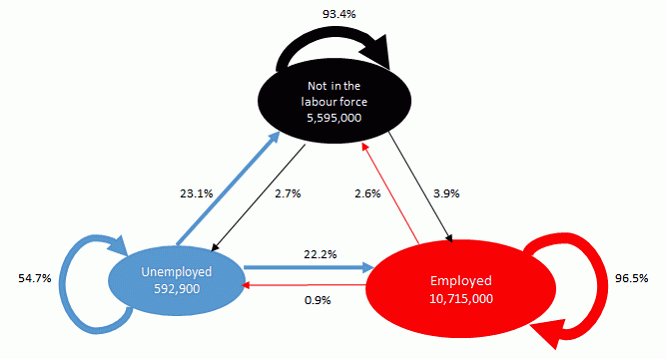Changes in headline labour force estimates, such as the number of employed people, unemployed people and the unemployment rate, are important indicators of the overall changes in the labour market from month to month.
However, these often relatively small overall ‘net’ changes are based on extensive month-to-month changes, with a much larger number of people entering or leaving employment and unemployment every month.
This article uses labour force 'gross flows' data to highlight the extent of these changes (see footnote), and why they are an important complement to the headline level estimates in understanding underlying labour market activity. This is particularly important at a time of great change, such as the COVID-19 period, when considerable changes are expected to be seen between March and April.
